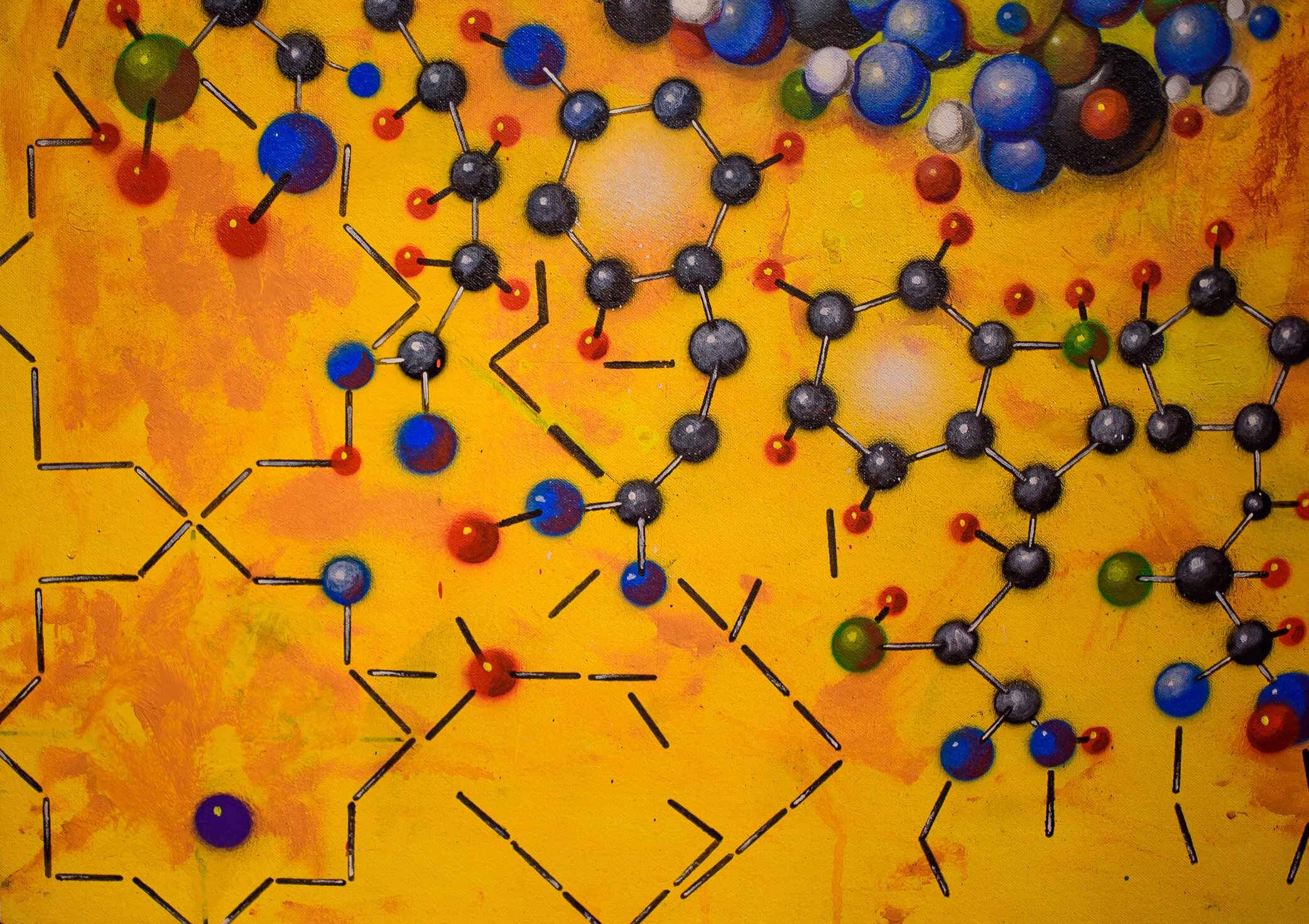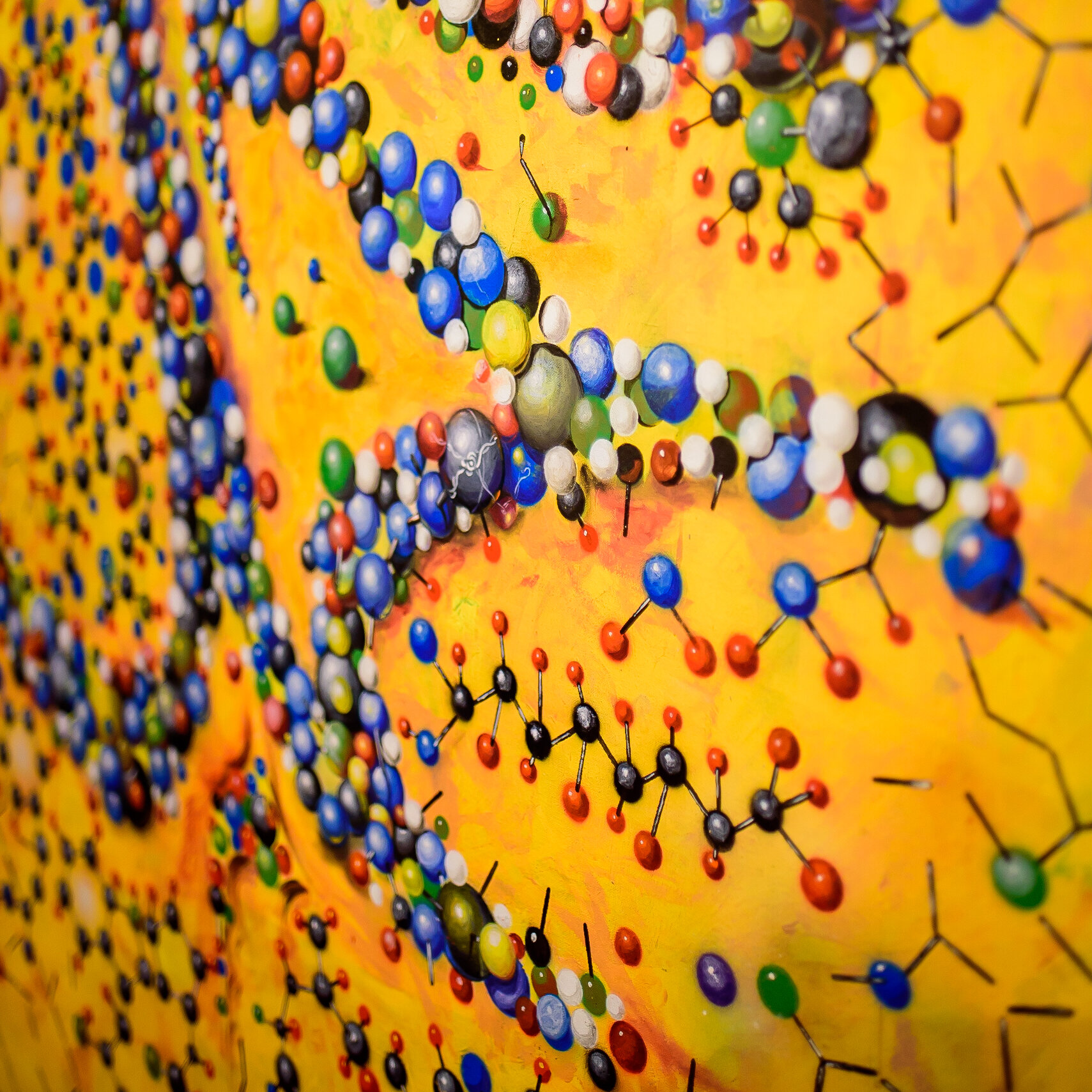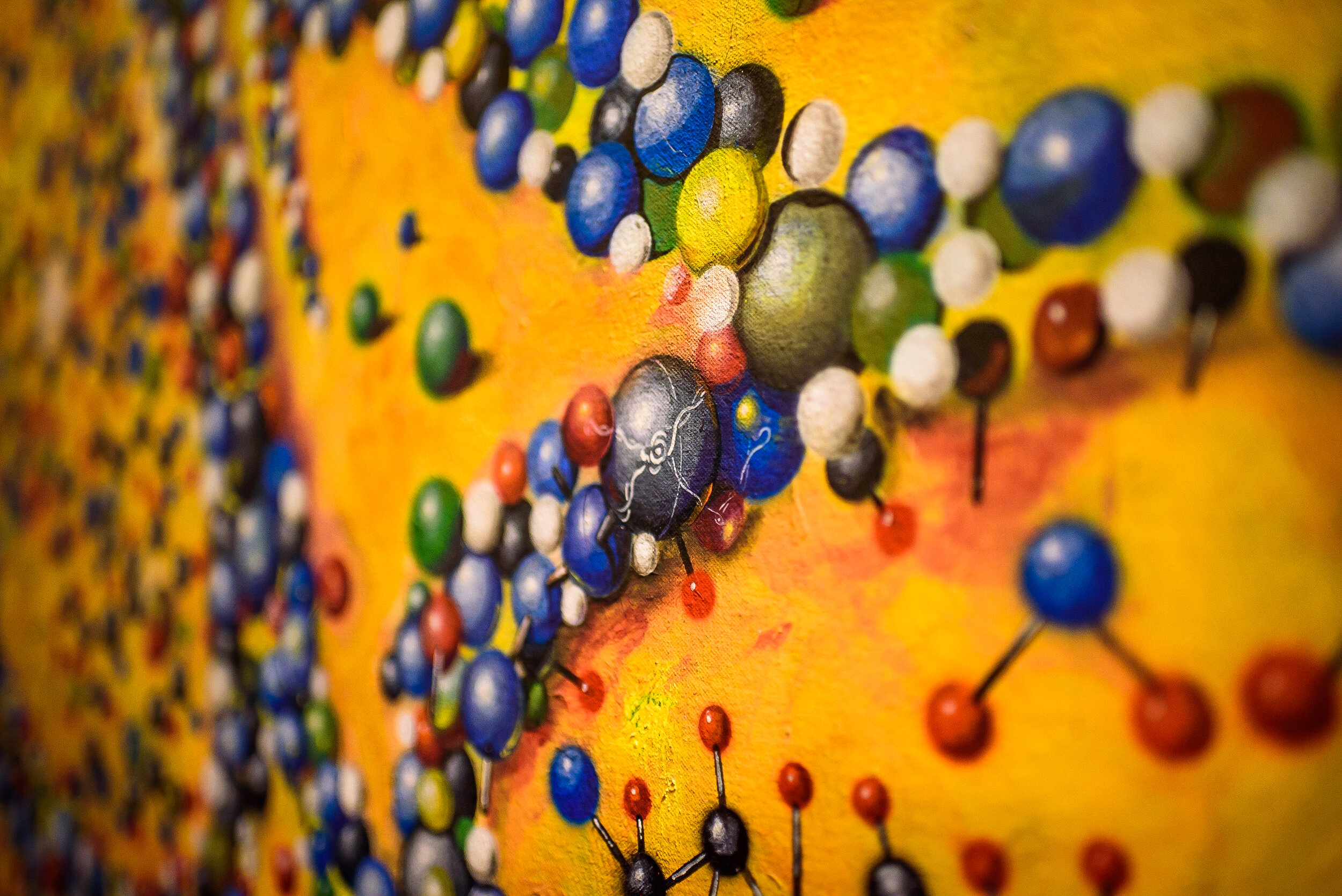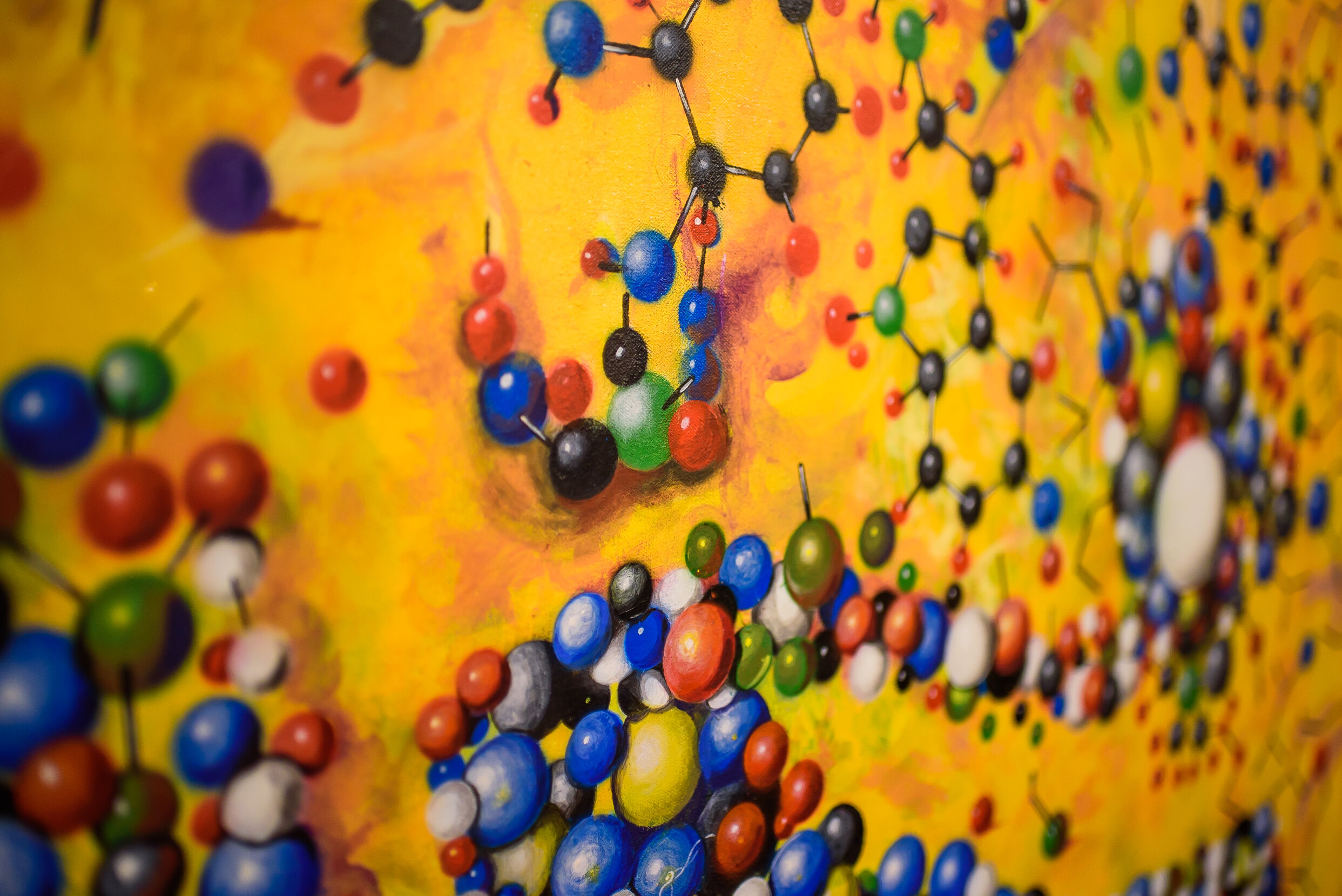A CHEMICAL PORTRAIT OF MUHAMMED | Acrylic and Enamel on Canvas | 120 cm * 150 cm






I’m not aware of the underlying architecture which allows for an emotion to be felt. I know this much from observation: when a depressed person takes Prozac, their mood improves after several weeks. When they take Panadol, it does not. There is, in the shape and mass of the fluoxetine molecule, the ability to interact with the mechanisms that bring about a smile. This is not to say, however, that a positive mood is, or loaded into, the arrangement of atoms. Rather, chemistry and chemicals are the means, medium and vectors, through which emotions can be experienced.
I needed to believe this if I was to spray a thousand circles onto a yellow canvas. I needed it for the task of shading each circle into a sphere. Eventually, the spheres (and sticks) converged into a thick blue line to make a word – a name – in Arabic:
“Muhammed.”
Prophet Muhammed (pbuh) is the most sacred figure amongst us Muslims. His Source of knowledge makes him intriguing – although not unique. Jesus, Noah, Moses and a hundred thousand more prophets from around the World were conduits for the ethical sciences. This knowledge was not generated through debate and observation inside a reasoning organ – as was the case for the Greek Philosophers. It came (mostly) into another organ from an external Source and externalised immediately through the tongue. Thus, in a world of relativism, they gave us the (0,0,0) coordinates of ethics.
His dialogue with the Architect makes him superhuman; it is an ability none of us possess. Yet I was interested more in Muhammed (pbuh) the mortal human - flesh and blood – for how else could anyone relate to him? The Divine dialogue was not his choice but that of his Maker’s. His achievements, however great, were human and from exercising an array of healthy traits. His miracle is cited as a book.
These sound ordinary but all things bigger than oneself, empires or inventions, are created out of a tool set of similar traits. A book hardly sounds miraculous – yet all modern technology (magic to those who cannot understand it) comes from applying the knowledge inside of books.
I c on str ucted a name out of chemical. I allowed it to cru m ble into molecules until what made the man and what makes the viewer was no longer different. Why? Because the work has two subjects - you being the second.
Here’s the first strike: If you are made from the same stuff as the great man, then you have felt like the great man. His disappointments, your losses, his victories, your triumphs, his bullies, your managers, his loyalty, your devotion – it feels the same. Miles and minutes (of separation) don’t exist in this place. And here’s the second strike: if you have felt like the great man, then greatness is not the property of Super humans.
UM

